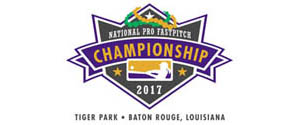The Pub
Ten Little Known facts about D-Day
* The boats used to deliver troops to the battlefield were the creation of Andrew Jackson Higgins. He adapted the shallow-water boats he designed for the oil industry in Louisiana to fit the needs of the military, according to the National WWII Museum in New Orleans.
* The Allies created a ruse to convince the Germans that the invasion would take place at Pas de Calais instead of the Cotentin Peninsula. According to the U.S. Army, a dummy base was constructed out of plywood, and inflatable tanks were placed to create the illusion of a massive army division.
* D-Day, originally codenamed Operation Overlord, almost took place on June 5. Bad weather delayed the invasion, and a meteorologist informed General Dwight D. Eisenhower that morning that the weather on the following day would be more favorable, according to the History Channel.
* The weather on June 6 turned out to be as miserable as the previous day. German General Erwin Rommel's troops at Normandy initially took no action to prepare for the invasion because they did not believe it was possible given the dreadful conditions.
* Rommel was nowhere near France on June 6. He was celebrating his wife's birthday in Germany during the invasion.
* The Royal Air Force dropped aluminum over Pas de Calais early in the morning on June 6, according to the BBC. The aluminum simulated a massive invasion fleet on enemy radar while troops got in place at the real invasion point.
* General Theodore Roosevelt Jr. served in both WWI and WWII. The son of the former president landed with the first wave of troops on D-Day. He was awarded the Congressional Medal of Honor for his efforts in WWII.
* Field Marshal Karl Rudolf Gerd von Rundsted had ordered two German armored tank divisions to be moved from Pas de Clais, but his superiors chose to wait until Hitler was awake to get his approval for the move, since he hated being woken up.
* British Prime Minister Winston Churchill was nervous about the invasion. On the night before, he told his wife, according to the BBC, "Do you realize that by the time you wake up in the morning twenty thousand men may have been killed?"
* The Allies anticipated many wounded soldiers and casualties. The Army spent two years planning for the medical treatment of the wounded. 30,000 stretchers and 60,000 blankets were ordered to be on hand at the onset of the invasion.
* The boats used to deliver troops to the battlefield were the creation of Andrew Jackson Higgins. He adapted the shallow-water boats he designed for the oil industry in Louisiana to fit the needs of the military, according to the National WWII Museum in New Orleans.
* The Allies created a ruse to convince the Germans that the invasion would take place at Pas de Calais instead of the Cotentin Peninsula. According to the U.S. Army, a dummy base was constructed out of plywood, and inflatable tanks were placed to create the illusion of a massive army division.
* D-Day, originally codenamed Operation Overlord, almost took place on June 5. Bad weather delayed the invasion, and a meteorologist informed General Dwight D. Eisenhower that morning that the weather on the following day would be more favorable, according to the History Channel.
* The weather on June 6 turned out to be as miserable as the previous day. German General Erwin Rommel's troops at Normandy initially took no action to prepare for the invasion because they did not believe it was possible given the dreadful conditions.
* Rommel was nowhere near France on June 6. He was celebrating his wife's birthday in Germany during the invasion.
* The Royal Air Force dropped aluminum over Pas de Calais early in the morning on June 6, according to the BBC. The aluminum simulated a massive invasion fleet on enemy radar while troops got in place at the real invasion point.
* General Theodore Roosevelt Jr. served in both WWI and WWII. The son of the former president landed with the first wave of troops on D-Day. He was awarded the Congressional Medal of Honor for his efforts in WWII.
* Field Marshal Karl Rudolf Gerd von Rundsted had ordered two German armored tank divisions to be moved from Pas de Clais, but his superiors chose to wait until Hitler was awake to get his approval for the move, since he hated being woken up.
* British Prime Minister Winston Churchill was nervous about the invasion. On the night before, he told his wife, according to the BBC, "Do you realize that by the time you wake up in the morning twenty thousand men may have been killed?"
* The Allies anticipated many wounded soldiers and casualties. The Army spent two years planning for the medical treatment of the wounded. 30,000 stretchers and 60,000 blankets were ordered to be on hand at the onset of the invasion.
-

jonriv - Posts: 4875
- Joined: Fri Feb 20, 2009 6:01 am
- Location: Connecticut
A little story associated with D-Day
My Mother's stepfather who landed in Normandy on D-Day +1. He was emigrated from what is now Poland(then Germany) to the Bronx with his mother when he was younger. As he was marching along a road heading inland he saw German prisoners heading inland- to his surprise he saw his older brother(who had stayed behind in Germany) Its amazing how with everything going on that these two brothers would cross paths this way--- he later was back in England where he met my Grandmother(widowed by the war)
My Mother's stepfather who landed in Normandy on D-Day +1. He was emigrated from what is now Poland(then Germany) to the Bronx with his mother when he was younger. As he was marching along a road heading inland he saw German prisoners heading inland- to his surprise he saw his older brother(who had stayed behind in Germany) Its amazing how with everything going on that these two brothers would cross paths this way--- he later was back in England where he met my Grandmother(widowed by the war)
-

jonriv - Posts: 4875
- Joined: Fri Feb 20, 2009 6:01 am
- Location: Connecticut
Consider the following D-Day facts:
•Until the very last minute, the place of invasion - Normandy - was the most heavily guarded secret on the planet.
•Even the units conducting the initial assaults did not know the locations of their landings.
•Surprise was crucial since Germany had 55 divisions in France - the Allies could transport no more than 8 divisions on D-Day morning.
•It is estimated that nearly 2 million soldiers, sailors and airmen were involved in Operation Overlord, including U.S., British, and Canadians who were scheduled to fight after men on the ground secured a Normandy bridgehead.
•195,000 naval personnel manned 6,939 naval vessels (including 1,200 warships and 15 hospital ships).
•About 17 million maps supported the mission.
•Training maps used fake names.
•The United States shipped 7 million tons of supplies (that translates into 14 billion pounds of material).
•Of those supplies, ammunition accounted for 448,000 tons.
•Air-support operations - often overlooked in the success of D-Day - sustained significant losses: Between the 1st of April and the 5th of June, 1944, the Allies flew 14,000 missions losing 12,000 airmen and 2,000 aircraft.
•127 more planes were lost on D-Day.
•By the end of the Normandy campaign, 28,000 airmen were dead.
•Instead of two days, it took Germany's 2nd Waffen SS Division two weeks to reach the front. Allied air power, Eisenhower's spies and French Resistance contacts all contributed to that result.
•There are 9,386 graves in the American cemetery at Colleville-sur-Mer. Each grave faces west, toward America.
•307 of those graves contain the remains of "unknown" soldiers.
•1,557 names are listed in The Garden of the Missing for those who were never found.
•4,868 British dead are buried in the Bayeux Cemetery.
•1,837 British names are listed at Bayeux for those who were never found.
•There were 946 Canadian casualties in the Normandy campaign.
•21,500 German dead are buried at LaCambe.
Had it not been for the discovery of penicillin by Alexander Fleming (in 1928) and further research and testing by Howard Florey and Ernst Chain (in the late 30s and early 40s) - proving that penicillin could successfully treat infections - the death tolls would have been far greater.
Five years before he died, General Eisenhower (who was a conquering hero at war's end and later served two terms as America's president) came back to Colleville-sur-Mer. It was the first, and only, time he made that journey after the war. Looking over Omaha Beach, he spoke from his heart:
. . . these men came here - British and our allies, and Americans - to storm these beaches for one purpose only, not to gain anything for ourselves, not to fulfill any ambitions that America had for conquest, but just to preserve freedom. . . . Many thousands of men have died for such ideals as these. . . but these young boys. . . were cut off in their prime. . . I devoutly hope that we will never again have to see such scenes as these. I think and hope, and pray, that humanity will have learned. . . we must find some way . . . to gain an eternal peace for this world. ("Eisenhower: A Soldier's Life," by Carlo D'Este, p. 705.)
Decades after D-Day, even though humanity seems farther than ever from finding "some way to gain an eternal peace for this world," everyone can agree on at least one point. Those who fought, and died, to free Europe on that day altered the course of history.
•Until the very last minute, the place of invasion - Normandy - was the most heavily guarded secret on the planet.
•Even the units conducting the initial assaults did not know the locations of their landings.
•Surprise was crucial since Germany had 55 divisions in France - the Allies could transport no more than 8 divisions on D-Day morning.
•It is estimated that nearly 2 million soldiers, sailors and airmen were involved in Operation Overlord, including U.S., British, and Canadians who were scheduled to fight after men on the ground secured a Normandy bridgehead.
•195,000 naval personnel manned 6,939 naval vessels (including 1,200 warships and 15 hospital ships).
•About 17 million maps supported the mission.
•Training maps used fake names.
•The United States shipped 7 million tons of supplies (that translates into 14 billion pounds of material).
•Of those supplies, ammunition accounted for 448,000 tons.
•Air-support operations - often overlooked in the success of D-Day - sustained significant losses: Between the 1st of April and the 5th of June, 1944, the Allies flew 14,000 missions losing 12,000 airmen and 2,000 aircraft.
•127 more planes were lost on D-Day.
•By the end of the Normandy campaign, 28,000 airmen were dead.
•Instead of two days, it took Germany's 2nd Waffen SS Division two weeks to reach the front. Allied air power, Eisenhower's spies and French Resistance contacts all contributed to that result.
•There are 9,386 graves in the American cemetery at Colleville-sur-Mer. Each grave faces west, toward America.
•307 of those graves contain the remains of "unknown" soldiers.
•1,557 names are listed in The Garden of the Missing for those who were never found.
•4,868 British dead are buried in the Bayeux Cemetery.
•1,837 British names are listed at Bayeux for those who were never found.
•There were 946 Canadian casualties in the Normandy campaign.
•21,500 German dead are buried at LaCambe.
Had it not been for the discovery of penicillin by Alexander Fleming (in 1928) and further research and testing by Howard Florey and Ernst Chain (in the late 30s and early 40s) - proving that penicillin could successfully treat infections - the death tolls would have been far greater.
Five years before he died, General Eisenhower (who was a conquering hero at war's end and later served two terms as America's president) came back to Colleville-sur-Mer. It was the first, and only, time he made that journey after the war. Looking over Omaha Beach, he spoke from his heart:
. . . these men came here - British and our allies, and Americans - to storm these beaches for one purpose only, not to gain anything for ourselves, not to fulfill any ambitions that America had for conquest, but just to preserve freedom. . . . Many thousands of men have died for such ideals as these. . . but these young boys. . . were cut off in their prime. . . I devoutly hope that we will never again have to see such scenes as these. I think and hope, and pray, that humanity will have learned. . . we must find some way . . . to gain an eternal peace for this world. ("Eisenhower: A Soldier's Life," by Carlo D'Este, p. 705.)
Decades after D-Day, even though humanity seems farther than ever from finding "some way to gain an eternal peace for this world," everyone can agree on at least one point. Those who fought, and died, to free Europe on that day altered the course of history.
-

jonriv - Posts: 4875
- Joined: Fri Feb 20, 2009 6:01 am
- Location: Connecticut
jonriv wrote:* The Allies created a ruse to convince the Germans that the invasion would take place at Pas de Calais instead of the Cotentin Peninsula. According to the U.S. Army, a dummy base was constructed out of plywood, and inflatable tanks were placed to create the illusion of a massive army division.
Patton was the commander of the decoy army to sell it to the Germans. From Wikipedia -
The German High Command still had more respect for Patton than for any other Allied commander and considered him central to any plan to invade Europe from the United Kingdom.[128] Because of this, Patton was made a prominent figure in the deception operation, Fortitude, in early 1944.[129] The Allies fed German spies a steady stream of false intelligence that Patton had been named commander of the First United States Army Group (FUSAG) and was preparing this command for an invasion of Pas de Calais. The FUSAG command was in reality an intricately constructed "phantom" army of decoys, props, and fake signals traffic based around Dover to mislead German aircraft and to make Axis leaders believe a large force was massing there to mask the real location of the invasion in Normandy. Patton was ordered to keep a low profile to deceive the Germans into thinking he was in Dover throughout early 1944, when he was actually training the Third Army.[128] As a result of Operation Fortitude, the German 15th Army remained at Pas de Calais to defend against Patton's supposed attack.[130] This formation held its position even after the invasion of Normandy on June 6, 1944. Patton flew into France a month later and returned to combat duty.
-

PDad - Premium Member

- Posts: 3439
- Joined: Sun Mar 29, 2009 4:52 pm
Quis custodiet ipsos custodes?
-

blackwidow - Posts: 628
- Joined: Thu Nov 06, 2008 1:17 pm
- Location: riding a horse so high your complaints just sound like ant farts to me.
Maybe the best way to honor the fallen...would be to find more ways to not send other to join them
...or make sure that what they believe was worth dying for, is still to be believed worth dying for. Otherwise to them, their deaths would be in vain and that's not acceptable when honoring the fallen. Honoring the fallen is not about what your beliefs are. It's about what they were and what their beliefs were about. Quit promoting your Libertarianism through things like this.
We herd sheep, we drive cattle, we lead people. Lead me, follow me, or get out of my way!
-

Battle - Posts: 1631
- Joined: Sun Apr 25, 2010 10:40 am
Yankee great yogi Berra was a 19 year sailor firing rockets at the Germans 300 yards off shore from a navy LCSS at d-day
-

jonriv - Posts: 4875
- Joined: Fri Feb 20, 2009 6:01 am
- Location: Connecticut
8 posts
• Page 1 of 1




























